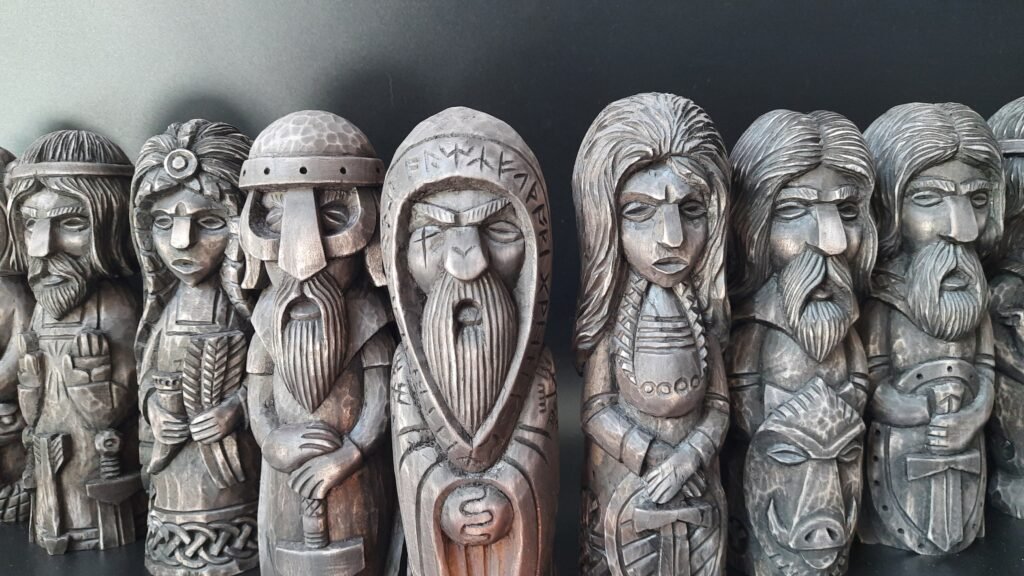Blog
What We Know About True Vikings
The hard talks around the topic of who the Vikings truly were will last forever, and everyone has the right to explore Viking Age history to discover the truth—or at least to find their own version of it. Even scholars sometimes misuse the term “Viking” and attempt to prove that not only the Norse raiders or seafaring warriors of Scandinavian origin can actually be called Vikings.
To proceed with our research, we should understand the main features of this historical period:
The Viking Age was the period during the Middle Ages when Norsemen, commonly known as Vikings, began large-scale raiding, colonization, military conquests, and trading throughout Europe—primarily due to increased population and crises in agriculture. They even most likely reached North America. This period followed the Migration Period and the Germanic Iron Age. The Viking Age applies not only to their homeland of Scandinavia but to any place historically settled by Norse people during this time. The Scandinavians of the Viking Age are often referred to as Vikings as well as Norsemen, although only a few of them were Vikings in the technical sense.
Voyaging by sea from their homelands in Denmark, Sweden, and Norway, the Nordic people settled in Ireland and the British Isles, in Iceland, the Faroe Islands, Normandy, and Greenland, and along the Baltic coast. They traveled through the largest Eastern European rivers, such as the Dnieper and Volga, where they were also called Varangians. The Vikings even briefly settled on Newfoundland Island off the east coast of modern Canada, becoming the first Europeans to reach North America’s shores. The Norse-Gaels, Kievan Rus’ people with their famous capital Kiev (modern Ukraine), the Normans, Faroese, and Icelanders emerged from these Norse colonies.
The Vikings founded numerous kingdoms and earldoms across Europe, such as:
The Kingdom of the Isles (Suðreyjar)
Orkney (Norðreyjar)
York (Jórvík) and the Danelaw (Danalǫg)
Dublin (Dyflin)
Normandy
Kievan Rus’
During the Viking Age, the Norse homelands were also consolidated into larger kingdoms. The short-lived North Sea Empire controlled large parts of Scandinavia and the British Isles.
Why Did the Vikings Expand?
Several major factors drove Viking expansion. The Vikings were drawn by the growth of wealthy towns and monasteries overseas, as well as the weak local kingdoms that lacked strong armies.
Information about the Viking Age is drawn largely from primary sources written by those who encountered the Vikings, as well as archaeological discoveries. Some of the most detailed historical sources about Viking life are the Icelandic sagas. These sagas recount the deeds of powerful people, such as the kings of Norway or the earls of Orkney, but they also provide insight into the lives of common Icelanders.
The sagas often describe events in great detail, including conversations and conflicts. However, they were written 200–300 years after the events they describe, meaning their historical accuracy must be carefully analyzed.

Who Were the Vikings?
Originally, the Vikings were raiders, and this activity became so infamous that eventually, the term “Viking” was used to describe a wide range of people, places, and events between 750 AD–793 AD and 1066 AD.
As Jacqueline Simpson, a British researcher of Norse legends, states:
“In medieval Scandinavian languages, a Vikingr is a pirate, a freebooter who seeks wealth either by ship-borne raids on foreign coasts or by waylaying more peaceful seafarers in home waters. There is also an abstract noun Viking, meaning ‘the act of going raiding overseas’….
Strictly speaking, therefore, the term should only be applied to men or women actually engaged in these violent pursuits, and not to every contemporary Scandinavian farmer, merchant, settler, or craftsman, nor even to warriors fighting in the dynastic wars of their lords or in their own private feuds.
However, it was the raiders who made the most impact on Europe at the time, so that it has become customary to apply the term ‘Viking Age’ to the period of Scandinavian history beginning in the 790s (the time of the first recorded raids on Western Europe) and petering out somewhere around the middle of the eleventh century (by which time raids and emigrations had ceased, the settlements established abroad had become thoroughly integrated with the local populations, and social changes in the Scandinavian homelands had marked the transition to their true Middle Ages).
Indeed, the term is such a convenient label for the distinctive culture of this period that one now talks not only of ‘Viking weapons’ and ‘Viking ships’ but of ‘Viking pagan art,’ ‘Viking households,’ and even ‘Viking-style agriculture’—expressions which would have seemed meaningless to people living at the time.”
(Source: Jacqueline Simpson. Everyday Life in the Viking Age. New York: Dorset, 1967. ISBN 0-87029-146-X. p.11)
The Viking Legacy
The legacy of the Vikings is vast. From battle tactics and shipbuilding technology to trade routes and settlements, their influence is still visible in many parts of the world. Viking history is not just about raiding and warfare but also about exploration, cultural exchange, and craftsmanship.
At Algiz Rune Art Workshop, we honor this legacy by offering authentic, high-quality Viking Age amulet replicas handmade from silver, bronze, wood, and bone (antler). If you are looking for historical Viking gifts, you can visit our workshop page at www.algizrune.com.
Let the wisdom and courage of the Vikings inspire you!